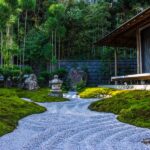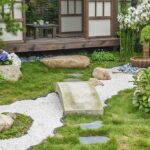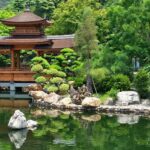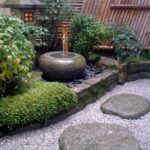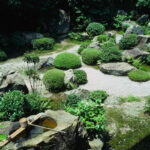Japanese garden design is a unique and centuries-old art form that has been cherished and perfected over generations. These gardens are known for their simplicity, balance, and serene beauty, making them a popular choice for those seeking tranquility and peacefulness in their outdoor spaces. The design of a Japanese garden is carefully thought out and each element is intentionally placed to create a harmonious and peaceful environment.
One of the key principles of Japanese garden design is the concept of “wabi-sabi,” which is the acceptance of imperfection and impermanence. This philosophy is reflected in the design of Japanese gardens, which often include natural elements such as rocks, water, and plants that are carefully arranged to create a sense of balance and harmony. By embracing the imperfections of nature, Japanese gardens capture the essence of the fleeting beauty of life.
Another important aspect of Japanese garden design is the use of symbolism and metaphors. Each element in a Japanese garden has a specific meaning, whether it be a stone lantern representing enlightenment or a bamboo fence symbolizing protection. These symbolic elements add depth and meaning to the garden, creating a space that is not only visually pleasing but also spiritually enriching.
Japanese gardens are also known for their meticulous attention to detail. Every aspect of the garden, from the arrangement of rocks and plants to the carefully raked gravel in a zen garden, is precisely planned and executed to create a sense of tranquility and balance. The use of carefully trimmed trees and shrubs, known as “niwaki,” adds a sense of order and structure to the garden, while creating a sense of harmony with nature.
One of the most iconic features of Japanese garden design is the use of water features, such as ponds, streams, and waterfalls. Water is considered a vital element in Japanese gardens, symbolizing life, purity, and tranquility. The sound of flowing water and the reflection of the surrounding plants and structures create a sense of calm and serenity, making water features a popular choice for those seeking a peaceful and meditative space.
In conclusion, Japanese garden design is a beautiful and timeless art form that has been perfected over centuries. By embracing the principles of wabi-sabi, incorporating symbolism and metaphors, paying attention to detail, and incorporating water features, Japanese gardens create a sense of balance, harmony, and tranquility that is truly unique and awe-inspiring. Whether you have a small backyard or a large estate, a Japanese garden can bring a sense of peace and serenity to your outdoor space.

